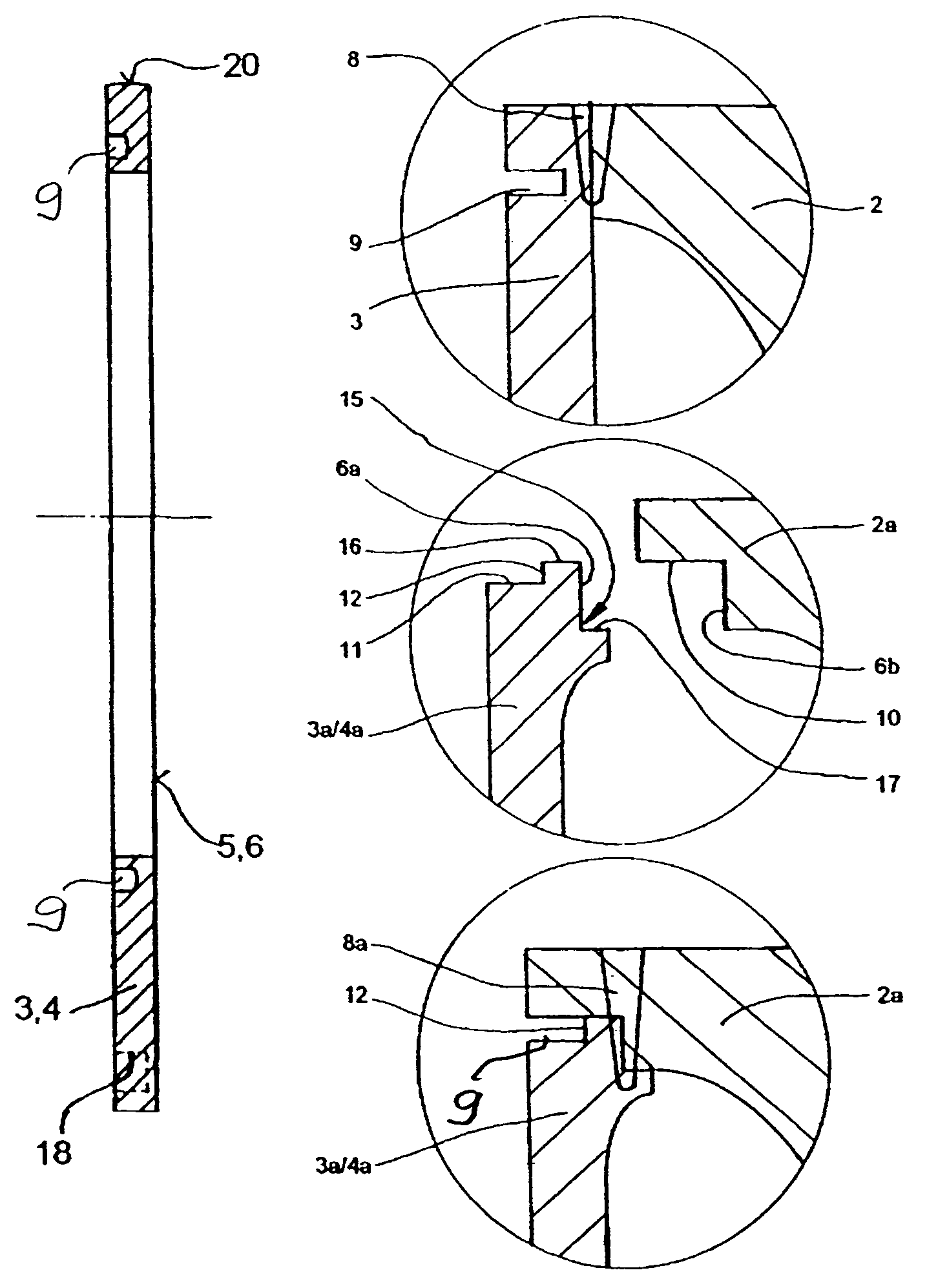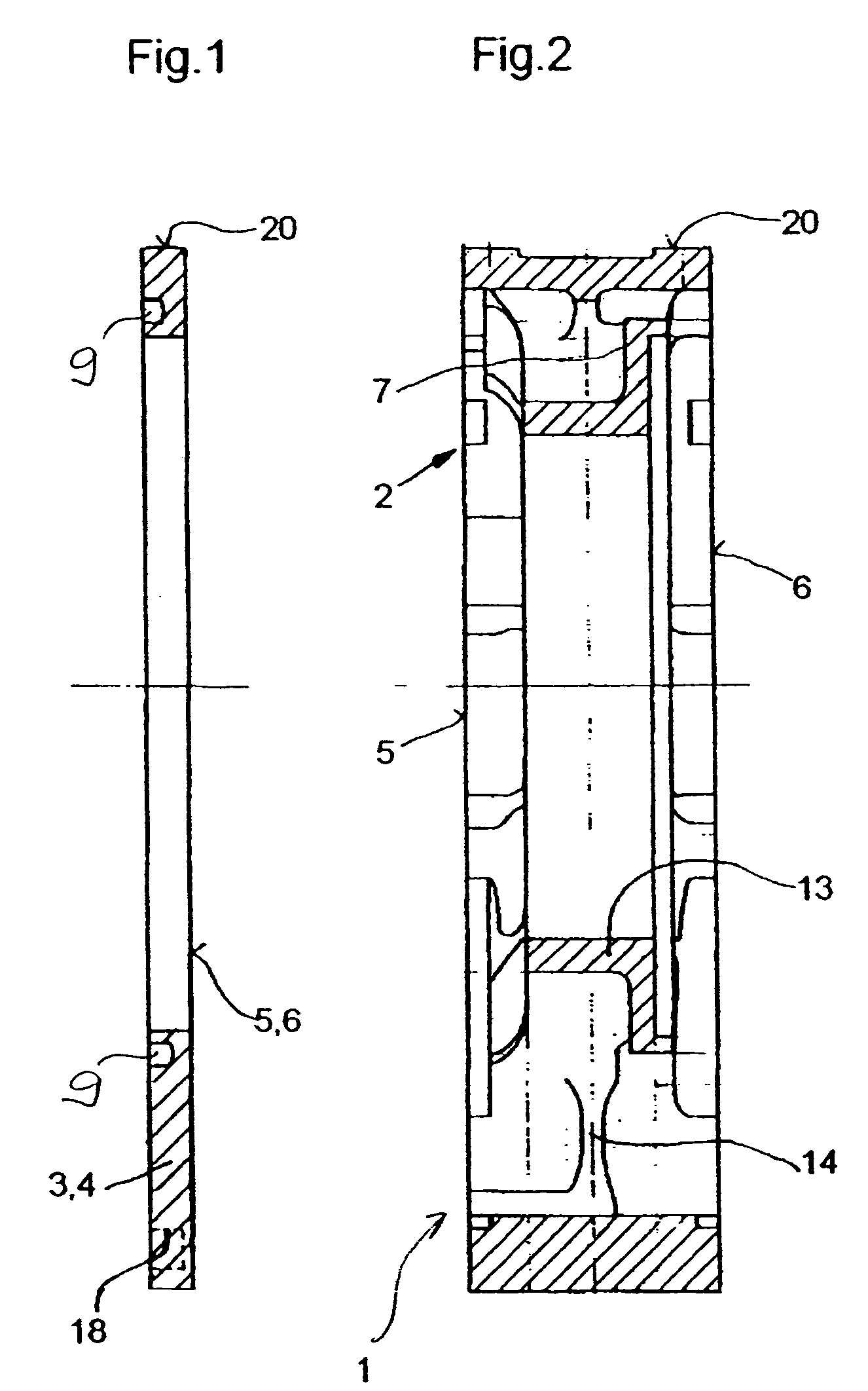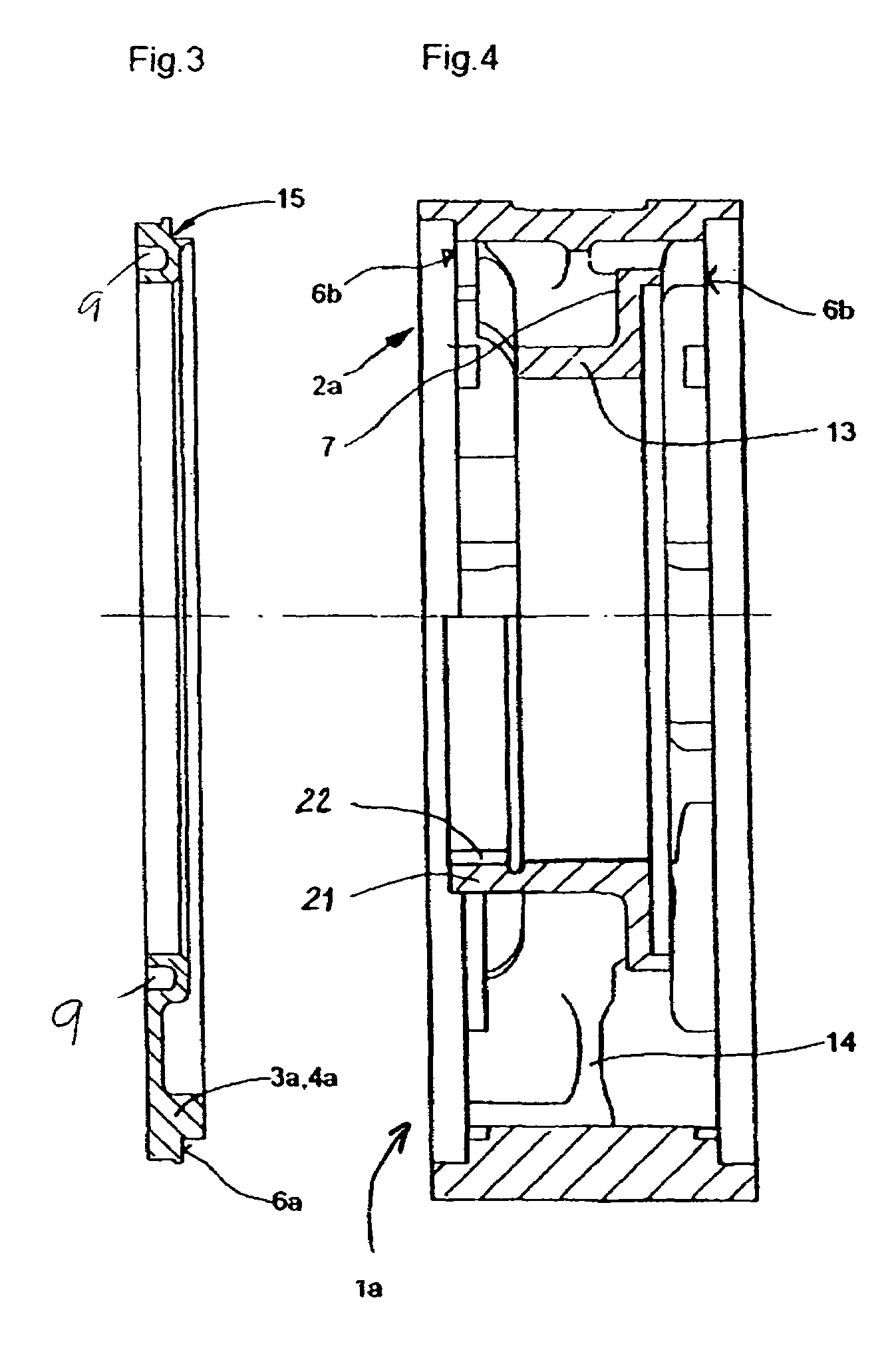Piston for a rotary combustion engine
a technology of rotary combustion engine and piston, which is applied in the direction of rotary piston engine, rotary or oscillating piston engine, engine lubrication, etc., can solve the problems of high cost, time-consuming, and difficult production of conventional piston housings, and achieve the effect of streamlined process for producing pistons
- Summary
- Abstract
- Description
- Claims
- Application Information
AI Technical Summary
Benefits of technology
Problems solved by technology
Method used
Image
Examples
first embodiment
[0031]FIG. 2 shows a piston housing 2, which has a flat surface 5 on one side and a flat surface 6 on the power takeoff side, against which the sidewalls 3, 4 are placed and clamped. The piston contour 20 extends around the outer circumference. When the sidewalls 3, 4 are clamped together with the housing, the outside contours of all three parts must be brought into alignment. A ring element 13 is coaxial to the center line of the piston 1. The ring serves as a support for the piston 1 on the eccentric shaft 52 (FIG. 10) and is made as an integral part to the piston housing 2, being connected to it by a plurality of ribs 14. A weld 8 can be seen in the enlarged view of FIG. 5; this weld allows the material in the region of the flat surfaces 5, 6 to run together and thus produces the piston 1 as a single unit. Arc strip grooves 9 and the sealing pin bores 18 can now be machined into the sidewalls 3, 4 in the conventional manner.
second embodiment
[0032]For a piston la, FIG. 3 shows a sidewall 3a, which is identical in design to a sidewall 4a on the power takeoff side. Each of the sidewalls 3a, 4a has a circumferential contact surface 6a, which can be laid against a circumferential contact surface 6b of the piston housing 2a, as can be seen in FIG. 4. Here, a ring-shaped shoulder 21 with the outside dimensions of an internal gear 22 is formed integrally on the ring element 13. It is obvious from a simultaneous consideration of the enlarged views of FIGS. 6 and 7 that the sidewall 3a, 4a is bounded externally by a first contour 16, which coincides with an outer flank 10 of the arc strip groove 9 in the piston housing 2a. The previously mentioned circumferential contact surface 6a is bounded by a second contour 17, so that a right-angled step 15 is formed, which is equidistant from the first contour 16. The sidewall 3a can now be installed in the previously described position on the piston housing 2a.
[0033]For the sake of effic...
third embodiment
[0034]a piston 1b can be seen in the enlarged views of FIGS. 8 and 9. This piston has a housing 2b, which is similar to a conventional piston except for a ring element 13a, which must be welded into the piston housing 2b. In this embodiment, the interior of the piston housing 2b with its oil-conducting profiles is no longer open on both sides; instead, it is open radially toward the inside, which makes the work of the model builder easier to the extent that a circumferential core can be used for casting, which costs less to produce than the cores used for the production of the conventional piston, the number of which must be the same as the number of ribs 14. A weld 8b connects each rib 14 to the ring element 13a in the region of an encircling cylindrical plane 19.
[0035]In comparison with first embodiment, second embodiment offers the advantages of optimal welds 8a, of a simple method for connecting the sidewalls 3a, 4a, and of the elimination of the need for machining the arc strip...
PUM
 Login to View More
Login to View More Abstract
Description
Claims
Application Information
 Login to View More
Login to View More - R&D
- Intellectual Property
- Life Sciences
- Materials
- Tech Scout
- Unparalleled Data Quality
- Higher Quality Content
- 60% Fewer Hallucinations
Browse by: Latest US Patents, China's latest patents, Technical Efficacy Thesaurus, Application Domain, Technology Topic, Popular Technical Reports.
© 2025 PatSnap. All rights reserved.Legal|Privacy policy|Modern Slavery Act Transparency Statement|Sitemap|About US| Contact US: help@patsnap.com



